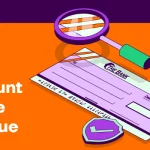What is a Bank Reconciliation Statement – Format, Rules & How to Prepare It

Businesses use cash books to keep track of bank and cash transactions. The transactions in a cash book are matched with the business’s cash and bank transaction records. Sometimes, it may happen that the transactions in the cash book don’t reconcile with the balance shown in the passbook. This is precisely why a Bank Reconciliation Statement (BRS) is prepared – it helps to reconcile the differences between bank transactions as recorded by the cash book and passbook.
Want to understand the rules and benefits of a Bank Reconciliation Statement and how to prepare it? Keep reading!
What is a Bank Reconciliation Statement (BRS)?
A Bank Reconciliation Statement is a report prepared by businesses to match or reconcile the bank transactions as recorded by the cash book and the company’s passbook.
It also helps check the accuracy of the transactions recorded by the business and the bank transactions and is prepared periodically to identify errors that a business entity might have made while recording transactions in the cash book.
How to Prepare a Bank Reconciliation Statement?
The process of preparing bank reconciliation statements is quite simple. It involves identifying and recording transactions on the company’s passbook and matching it with the transactions recorded by the bank. For the transactions that don’t match, proper corrections and adjustments are made to ensure that both passbooks reconcile.
Once the causes of differences in the bank balances are identified, a bank reconciliation statement is prepared in either of the following two ways:
- Without making adjustments to the balance of the cash book, and
- After the adjustments have been made to the balance of the cash book
Generally, a bank reconciliation statement is prepared after the adjustments have been made to the balance of the cash book of a company.
Steps to be Followed while Preparing a Bank Reconciliation Statement:
- Step 1: Determine the adjusted and unadjusted balance as per the cash book
This can be done by comparing the credits and deposits on the company’s passbook against the credits and debits in the bank account. - Step 2: Make necessary adjustments in the balance according to the cash book
It is better to adjust the cash book balance against the items in the company’s passbook before reconciliation. This way, cheques issued but not presented, cheques deposited but not collected yet, and other items that occur as a result of an error can be adjusted before a bank reconciliation statement is worked upon. - Step 3: Adjust the differences
After adjusting the items in the cash book against the passbook, adjust them with items that can lead to an error or difference due to the time gap. This could be due to cheques that have been issued, but not presented yet, so they are added back to the adjusted balance in the company’s cash book. Similarly, this could be due to cheques that have been deposited but have not been collected yet, so they are subtracted from the adjusted balance in the company’s cash book. - Step 4: Determine the net balance as per the cash book
Now that the adjusted balance in the cash book has further been adjusted for the above items, you will have the net balance in the cash book which must match with the pass book balance.
Also Read
When Does a Business Prepare a Bank Reconciliation Statement?
A business can prepare a bank reconciliation statement depending on the value and volume of bank transactions recorded by the business during a given period. It could be daily, weekly, monthly, quarterly, etc.
Preparing a Bank Reconciliation Statement in short intervals can help businesses maintain the accuracy of transactions and quickly identify any irregularities in the balance recorded by the business entity and the bank.
How Businesses Prepare a Bank Reconciliation Statement?
Here’s the procedure for preparing a bank reconciliation statement:
- Step 1
First, compare the balances available in the bank column of the bank statement and the cash book. The balances could be different due to unreceived payments, un-presented or uncredited cheques from the previous periods. - Step 2
Next, the business entity must compare the debit side of the bank column of the cash book with the credit side of the bank statement and the credit side of the bank column of the cash book with the debit side of the bank statement. Ensure all items checked should be highlighted to indicate that all the things appear in both records. - Step 3
Make sure that the entries in both the bank column of the cash book and the passbook are accounted for, and check to see if any entries were missed. In the cash book, the business should make the necessary adjustments based on the list of such entries. - Step 4
Make corrections or rectify any errors that appear in the cash book. - Step 5
Next, the business must calculate the revised and correct balance of the bank column of the cash book. - Step 6
Now, the business must prepare the Bank Reconciliation Statement with the updated cash book balance. - Step 7
The number of unpaid checks that a business firm issues to its creditors or suppliers must be added to the expense figure and the uncredited checks must be subtracted (checks paid into the bank that have not yet been collected are income). - Step 8
To correct the bank errors, all necessary adjustments must be made. Suppose the reconciliation statement starts with a debit balance according to the bank column of the cash book. In that case, the business can add all the amounts the bank has credited and deduct all transactions that the bank has credited. The opposite needs to be done if the bank reconciliation starts with the credit balance. - Step 9
The figure you arrive at after following the above steps should match the balance in the bank statement.
Bank Reconciliation Statement Format
| XYZ Company’s Bank Reconciliation Statement for March 2021 | ||
| Particulars | Amount (Rs.) | |
| Balance as per bank statement Add: Cheques deposited but not cleared Less: Cheques issued but not cleared in the bank |
20,000 50,000 |
3,00,000 20,000 50,000 |
| Adjusted balance | 2,70,000 | |
| Balance as per company books Add: Amount credited in bank but not recordedInterest received Less: Other charges not recorded in books |
9,800 200 750 |
2,70,000 10,000 750 |
| Adjusted bank balance in books | 2,79,250 | |
Bank Reconciliation Statement Example
Suppose your cash books reflect an overdraft balance amounting to Rs.18,000. Use the following details to calculate the adjusted cash balance and prepare an accounting bank reconciliation statement.
- Uncleared cheques: Rs.3,400
- Unpresented cheques: Rs.6,000
- Bank interest debited only in the passbook: Rs.1,000
- Bills collected and credited only in the passbook: Rs.1,600
- Cheque of X dishonoured: Rs.1,000
- Cheque issued to Y Pvt. Ltd. but not yet entered in the cash book: Rs.600
Also Read
Adjusted Bank Column of the Cash Book
| Date | Receipts | Amount (Rs.) | Date | Payments | Amount (Rs.) |
| Bills collected as per the pass book | 1,600.00 | Balance B/F | 18,000.00 | ||
| Balance C/F | 19,000 | Interest | 1,000.00 | ||
| Cheque dishonoured (X) | 1,000.00 | ||||
| Cheque issued to Y Pvt. Ltd. | 600.00 | ||||
| 20,600 | 20,600 |
Bank Reconciliation Statement as on December 31, 2021
| Bank overdraft as per the cash book | Rs. 19,000 | |
| Add | Uncleared cheques | Rs. 3,400 |
| Deduct | Unpresented cheques | Rs. 6,000 |
| Bank overdraft as per the passbook | Rs. 16,400 |
Bank Reconciliation Statement Rules
- Generally, the Bank Reconciliation Statement is prepared as per the balance of the cash book. In most cases, it is the starting point. However, it can also begin with the balance, as shown by the passbook. In that case, the treatment or adjustments of all items shall be reversed
- Only items that lead to a difference with reference to the time gap in recording the transaction will reflect in the reconciliation statement
- Any debit balance in the cash book is referred to as the deposits of the business entity
- Debit balance in the cash book equals to credit in the passbook
- Credit balance in the cash book refers to unfavourable balance
- Debit balance in the cash book is considered a favourable balance
- Cheques that are issued but not presented are adjusted in the cash book
- Businesses can come across the following scenarios:
- Debit balance or a favourable balance according to the cash book is presented, and the balance according to the passbook must be calculated.
- Evaluate the unfavourable balance or credit balance as per the cash book.
- The credit balance or favourable balance is listed in the passbook and the balance amount as per the cash book must be determined.
- The debit balance or unfavourable balance as per the passbook is given, and the balance as per the cash book must be determined.
Effect of Time Intervals on Bank Reconciliation Statements
When bank reconciliation statements are prepared monthly, the entries made don’t lead to any discrepancies after a while. It would be a good practice to refer to the Bank Reconciliation Statement prepared at the end of the previous month. The items included must be compared to the items included in the new bank reconciliation statement. It would help get clarity on whether they have been cleared. If the entries have already been cleared, then they need not appear in the Bank Reconciliation Statement to be prepared at the end of the current month.
However, note that a Bank Reconciliation Statement is prepared only for reconciling any discrepancies and irregularities and rectifying errors from the bank statement and the cash book. It should not be considered an accounting record in itself.
Benefits of Preparing a Bank Reconciliation Statement
Preparing bank reconciliation statements can help businesses in the following ways:
- Helps businesses identify any potential theft
- Helps keep errors at a minimum
- Helps businesses quickly detect accounting errors
- Helps identify transactions cleared by the bank and the ones that are pending
- Helps spot errors and update fees and charges
- Helps detect any possibilities of fraud
- The tracking of receivables also gets easier
- Helps periodically track transactions
Final Word
The difference between the balance reported in the bank column of the cash book and the passbook on any particular date is reconciled in a Bank Reconciliation Statement. It helps clarify discrepancies, reduces errors, helps keep track of transactions, and reduces the possibility of theft and fraud. For all businesses, a Bank Reconciliation Statement is a crucial document and must be prepared periodically for the smooth running of the company.
FAQs
Ans: There are five main types of account reconciliation, including bank reconciliation, vendor reconciliation, customer reconciliation, inter-company reconciliation and business-specific reconciliation.
Ans: When you receive your statement at the end of the month or take the information from your online banking records, you can perform a bank reconciliation. Comparing your statements, altering your balances, and documenting the reconciliation are the three main steps you need to follow.
Ans: Reconciliation of statements is the process of comparing transactions and activities recorded by a business and the bank. Furthermore, reconciliation involves resolving any irregularities and discrepancies that may have been identified during the process.
Ans: Preparing a bank reconciliation statement is important because it helps businesses identify errors in transactions recorded by a business. Furthermore, it helps identify differences between the bank statement and the accounting records. A bank reconciliation statement can also help businesses identify potential fraud risks to safeguard the business against losses.
Ans: A person who is not actively involved in the disbursement and cash receipts functions.
Disclaimer
This article is solely for educational purposes. Navi doesn't take any responsibility for the information or claims made in the blog.

Customer’s Feedback
No comments found.10 Best Bank for Savings Account in India [Highest Interest Rate 2023]
Savings account is a type of financial instrument offered by several banks. It lets you safely depo... Read More »What is Issuer Identification Number (IIN)- Working and Importance
What is an Issuer Identification Number (IIN)? Banks and financial institutions assign a distinc... Read More »What is a Vostro Account – Meaning, Working and Difference
What is a Vostro Account? A Vostro account is a bank account held by a domestic bank on behalf o... Read More »What is a Solvency Certificate? – Format, Documents Required & How to Apply Online?
What is a Solvency Certificate? A solvency certificate is a legal document furnishing the detail... Read More »What is Merchant Banking – Services, Features, Functions and Example
What is Merchant Banking? Merchant banking is a set of select banking and financial services off... Read More »Automated Clearing House: Objectives, Types and Process
Automated Clearing House is an electronic fund transfer network that manages automatic and direct... Read More »How to Redeem Credit Card Reward Points ?
Credit Card Reward points are types of incentives that customers receive when they use a credit car... Read More »What is Electronic Clearing Service (ECS) in Banking and How does it Work?
What is Electronic Clearing Service (ECS)? Electronic Clearing Service (ECS) is a method of elec... Read More »What are Credit Card Validators and How to Use them?
What is a Credit Card Validator? A credit card validator is a tool that checks the validity of a... Read More »What is Cash Management and How Does it Work?
Managing available capital can make sure that a small business stays afloat. Cash management is an ... Read More »What are Prepaid Expenses? – Definition, Examples, and Journal Entry
Prepaid expenses represent payments made in advance for products or services expected to be incurre... Read More »Increase Credit Card Limit – Important Tips and How to Do It?
The credit card limit is the maximum amount of money you can spend using your credit card. Your cre... Read More »Top 10 Chit Fund Schemes in India in 2023
Chit funds are one of the most popular return-generating saving schemes in India. It is a financial... Read More »10 Best Gold ETFs in India to Invest in April 2023
Gold ETFs or Gold Exchange Traded Funds are passively managed funds that track the price of physica... Read More »10 Best Demat Accounts in India for Beginners in 2023
Creation of Demat accounts revolutionised the way trades were conducted at the stock exchanges. It... Read More »20 Best Index Funds to Invest in India in April 2023
What is an Index Fund? An index fund is a type of mutual fund or exchange-traded fund (ETF) that... Read More »Best Arbitrage Mutual Funds to Invest in India in April 2023
Arbitrage funds are hybrid mutual fund schemes that aim to make low-risk profits by buying and sell... Read More »10 Best SIP Plans in India to Invest in April 2023
What is SIP? SIP or Systematic Investment Plan is a method of investing a fixed amount in ... Read More »10 Best Corporate Bond Funds in India to Invest in April 2023
Corporate bond funds are debt funds that invest at least 80% of the investment corpus in companies ... Read More »10 Best Bank for Savings Account in India [Highest Interest Rate 2023]
Savings account is a type of financial instrument offered by several banks. It lets you safely depo... Read More »

































